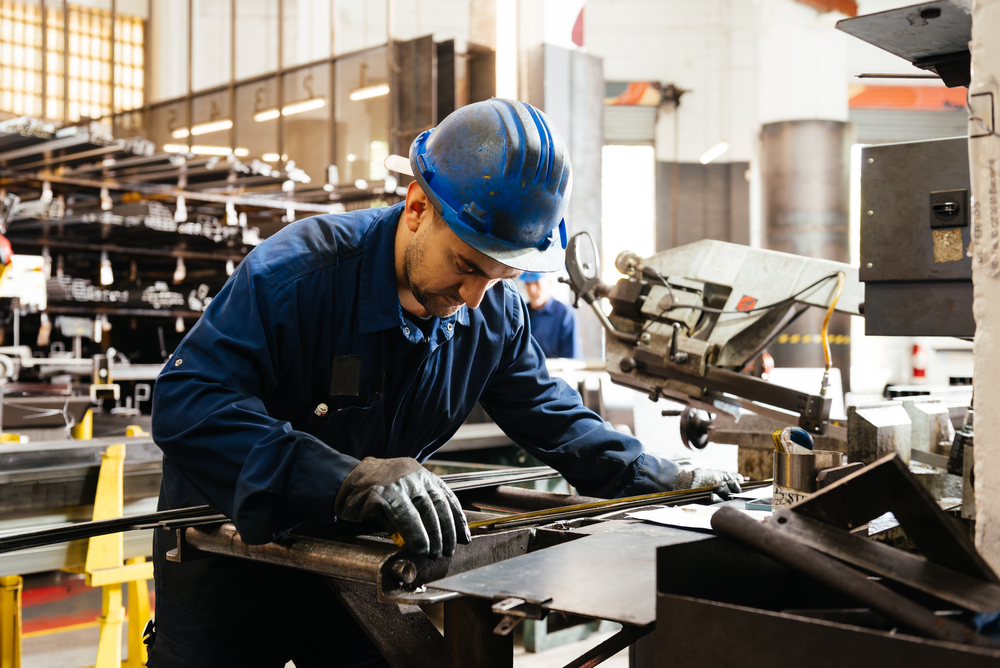In the world of industrial cleaning and sanitation efficiency, consistency and hygiene are king. One of the best ways to revolutionise cleaning in various industries is CIP cleaning (clean in place cip). This method means critical manufacturing equipment, that’s key to food safety, pharmaceuticals and industrial hygiene, can be kept sanitary without disassembly. Whether in food and beverage, pharmaceuticals, dairy or any industry where cleanliness is critical CIP systems allow companies to be hygienic and efficient.
In this article we will look at everything you need to know about CIP cleaning including the process, benefits, challenges, applications and future trends. We will also look at real world examples to show the importance of CIP cleaning in different industries.
What is CIP Cleaning?
CIP stands for Clean-in-Place, cleaning the internal surfaces of pipes, tanks, equipment and enclosed systems without the need for disassembly. The CIP cycle is critical in this process as it has automated steps and chemical applications to ensure cleaning efficiency, equipment integrity and compliance to safety and environmental regulations. This process involves circulating several cleaning solutions through the system to remove impurities, residues and bacteria. A non removable sink is to maintain sanitary conditions, prevent cross contamination and improve operational efficiency with minimal downtime.
In industries such as food and beverage, pharmaceuticals, dairy and cosmetics compliance to strict hygiene standards is non negotiable. Contamination in such areas can cause product damage, health risks and non compliance to regulatory requirements. So indiscriminate cleaning has become the backbone of industrial sanitation.
Clean-in-Place Benefits
There are many benefits of CIP for all industries. The cleaning agents in CIP systems are specific to the process equipment, so it’s a thorough and effective clean. The benefits are:
- Time and Labour Savings: Because it’s automated it reduces manual labour and downtime so you get increased productivity and cost savings.
- Consistent Cleaning: Automated systems ensure each clean cycle is the same every time, reduces human error.
- Safety: Because it eliminates manual disassembly the risk of contamination, injury or accident during the clean is reduced.
- Resource Efficiency: CIP systems are designed to reduce waste by optimising water, detergents and energy so the clean is more environmentally friendly.
- Regulatory Compliance: Many industries have to comply with strict health and safety regulations and CIP helps businesses meet those standards.
Types of CIP Systems
There are several types of CIP systems, each for specific applications and business needs. These systems use different cleaning fluids, including disposable and reusable cleaners to get a clean while meeting safety and environmental standards:
- Single use CIP: These systems use fresh cleaning solution for each clean. Used in highly regulated industries such as pharmaceuticals where cleanliness and contamination prevention is key.
- Re-use CIP: These systems reuse cleaning agents multiple times before they are discarded, used in large manufacturing facilities where cost is a factor.
- Hybrid CIP: These systems combine features of single use and reusable systems, so you get flexibility and adaptability for your specific clean requirements.
How Does the CIP Process Work?
The CIP process is a fully automated cleaning method that allows machinery and equipment to be cleaned without needing to be taken apart. This is especially useful in industries that require high levels of cleanliness, as the process relies on chemical agents to clean the equipment. The effectiveness of the cleaning depends on getting the right balance of chemical concentration and ensuring the system is properly automated. Here’s a step-by-step breakdown of how it all works:
Pre-Rinse
The first step is a pre-rinse, where water or another rinsing solution is flushed through the system. This helps to clear away any large debris, dirt, or residues. It’s a critical part of the process because it ensures that solid materials don’t build up and interfere with the cleaning agents used later. It also helps prevent the cleaning solution from becoming contaminated right from the start.
Cleaning Solution Application
Next, a cleaning agent, usually a detergent or caustic solution, is circulated through the system. This is where the real cleaning happens. The solution breaks down fats, proteins, sugars, and other residues that have built up on the equipment. The chemicals in the cleaning solution are specially chosen for the type of residue they’re targeting. For example, detergents are commonly used for food-based residues, while caustic solutions are better for breaking down protein-heavy materials.
Intermediate Rinse
Once the cleaning solution has had enough time to do its job, the system goes through an intermediate rinse. This flushes out the cleaning agents and the residues that were dissolved in the process. This step ensures that no cleaning chemicals are left behind, which could interfere with the next steps or even contaminate the product once production resumes.
Sanitization
Now comes sanitization. A disinfectant or sterilizing agent is applied to ensure any remaining bacteria or microorganisms are eliminated. This is particularly important in industries like pharmaceuticals, where the smallest bit of contamination can lead to serious health risks. The sanitization step ensures that the equipment is as sterile as possible before it’s used again.
Final Rinse
Finally, the system gets a clean water rinse to remove any remaining traces of chemicals. This ensures that no cleaning residues are left behind, and the system is completely clean and safe to use again in production.
The entire cleaning cycle is automated, meaning it runs on its own without needing manual intervention. This automation is what makes CIP cleaning so effective and consistent. By automating the process, industries can maintain a high standard of cleanliness, even with complex systems that would otherwise need to be taken apart and cleaned manually.
The Importance of CIP Cleaning in Different Industries
Food and Beverage Industry
In the food processing industry, keeping things clean is absolutely crucial for both safety and quality. The equipment used in production is constantly exposed to contaminants like bacteria, biofilms, and leftover ingredients. That’s where CIP cleaning comes in — it takes away the need for manual cleaning, saving time and ensuring a higher level of consistency. Here are some ways it’s used:
- Dairy Processing: Dairy plants rely on CIP systems to make sure their tanks, pipes, and pasteurizers are cleaned thoroughly after every batch. This helps prevent contamination and ensures that the next batch is free from harmful bacteria.
- Brewing: Breweries use CIP cleaning to keep their tanks, brewing equipment, and pipelines sanitized. This is key to preventing spoilage and making sure the beer tastes great every time.
- Soft Drink Manufacturing: Soft drink production lines need to stay sanitized to avoid microbial contamination in beverages. CIP systems ensure that everything stays clean between batches, so the final product is safe and fresh.
Pharmaceutical Industry
In the pharmaceutical industry, cleanliness is even more important because even the smallest amount of contamination can cause serious problems. From product recalls to health risks, the stakes are high. That’s why CIP cleaning is essential in keeping everything clean and up to the strict standards required in pharmaceutical manufacturing. Here’s how it helps:
- Sterile Environments: CIP cleaning makes sure manufacturing equipment stays free from any harmful bacteria or pathogens. This is critical for creating a sterile environment and ensuring the safety of the products.
- Regulatory Compliance: The pharmaceutical industry is heavily regulated by organizations like the FDA and WHO. CIP cleaning helps companies comply with these strict standards, making sure equipment stays clean and reduces the risk of costly penalties.
- Preventing Cross-Contamination: With CIP cleaning, the risk of cross-contamination between different batches is minimized, which helps maintain the integrity of the products and ensures they’re safe for consumers.
Dairy Industry
Dairy products, like milk, are highly perishable and can easily be affected by microbial growth. Keeping everything clean is a must to make sure the products are safe to consume and have a long shelf life. Dairy processing plants use CIP cleaning systems to ensure their tanks, pasteurizers, pipes, and other equipment are cleaned properly after each use. This ensures that the dairy products stay fresh, safe, and high-quality.
Challenges in Implementing CIP Cleaning
While CIP cleaning offers a lot of advantages, it’s not without its challenges. Here are a few things to keep in mind:
- High Initial Investment: Getting a CIP system up and running can be pricey, particularly for smaller businesses. You’re looking at costs for the equipment itself, installation, and the integration of the system into your existing setup.
- Ongoing Maintenance: To keep a CIP system running smoothly, regular monitoring, maintenance, and calibration are necessary. This can add up over time and contribute to ongoing operational costs.
- Chemical Waste Management: Properly disposing of cleaning agents and chemicals is a must, and it has to be done according to environmental regulations. This adds a layer of complexity and requires careful attention to ensure compliance.
- System Downtime: While CIP systems are designed to reduce downtime, things can go wrong. If the system isn’t implemented correctly or there are malfunctions, it could lead to inefficiencies or delays in production.
The Future of CIP Cleaning Technology
As industries change, so does CIP cleaning technology. We’re seeing some cool stuff, including spray devices that automate the cleaning process without any manual work. Here are some of the trends shaping the future of CIP cleaning:
- Smart CIP Systems: Smart systems are taking CIP cleaning to the next level. They use sensors, automation and real time monitoring to track how well the cleaning is going, how much chemical is being used and how resources like water and energy are being consumed. They can even adjust to meet specific cleaning needs, making the process more efficient and reducing waste.
- Eco-Friendly CIP Solutions: As the environment becomes more important, there’s a growing focus on eco-friendly cleaning agents. These biodegradable, non-toxic solutions are safe for the environment and effective in CIP systems. They help reduce the overall environmental impact of industrial cleaning while keeping high cleaning standards.
- Water Recycling: Water conservation is big right now and CIP systems are catching up. Advanced filtration systems are being integrated to recycle water during cleaning cycles, making the process more sustainable and efficient. This reduces water waste and helps businesses reduce their water consumption.
- Artificial Intelligence (AI) and Machine Learning: AI and machine learning are playing a big role in CIP cleaning. They can optimise cleaning schedules, identify inefficiencies in real time and even predict system failures before they happen. This proactive approach saves time, money and prevents downtime.
- Nanotechnology in Cleaning Agents: Nanotechnology is making cleaning agents more effective at removing tiny contaminants and biofilms. With these advanced cleaning solutions CIP systems can clean even more efficiently, making sure equipment is sanitised without any harmful residues left behind.
Best Practices for Effective CIP Cleaning
To maximize the effectiveness of CIP cleaning, industries should adopt the following best practices:
- Regular Audits: Periodically evaluate the CIP system to ensure it operates efficiently and meets hygiene standards.
- Proper Chemical Selection: Choose cleaning agents that are tailored to the specific residues or contaminants present in the production process.
- Employee Training: Ensure that employees understand the importance of CIP cleaning and are trained on how to use the system effectively.
- Data-Driven Optimization: Use real-time data to continuously monitor and optimize the cleaning cycles.
Conclusion
In industries where cleanliness is key CIP cleaning is here to stay. Clean in place systems have become a vital tool for food and beverage, pharmaceutical, dairy and other industries to maintain hygiene standards. Proper cleaning techniques for stainless steel surfaces eg caustic and acid washes are critical to prevent corrosion and remove residues and microorganisms. As technology continues to evolve CIP cleaning will get smarter, more sustainable and cost effective, safer and better quality products.
Being CIP and staying current with industry trends will help you stay ahead of the game and keep cleanliness and operational excellence high in the years to come.
-
 Maintenance Plan: What Is It And How Does It Work
Maintenance Plan: What Is It And How Does It WorkIn modern manufacturing, equipment downtime costs businesses thousands of dollars an hour. The difference between...
Technology
-
 Competency Management
Competency ManagementModern businesses face a big challenge: how do you ensure every employee has the skills...
Technology
-
 Unlocking the Benefits of Total Quality Management
Unlocking the Benefits of Total Quality ManagementIn today’s competitive world, the quality of products and services is becoming the key to...
Technology
